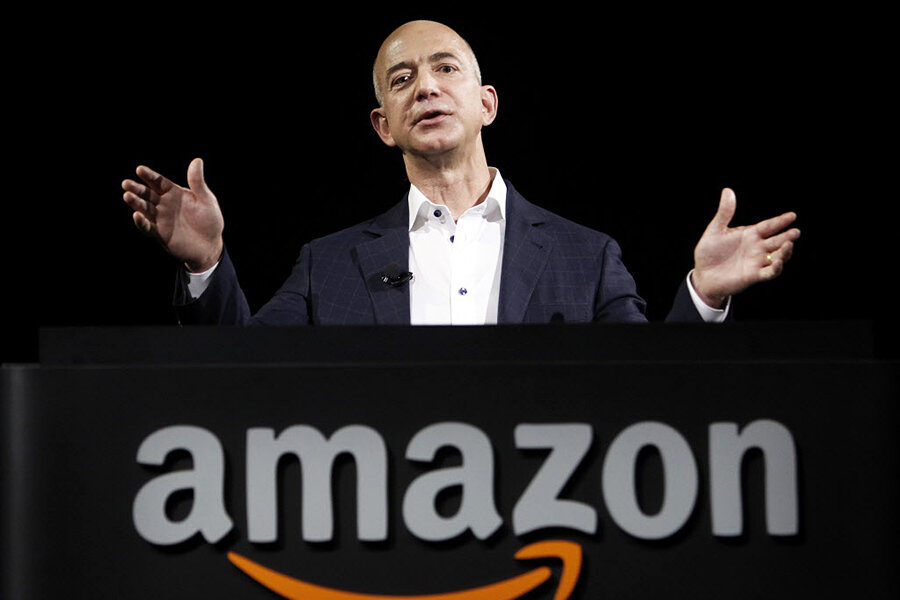Is Amazon's high-demand work environment the norm for tech companies?
Loading...
On Saturday, The New York Times published a very long article highlighting the “bruising” working environment of retail giant Amazon’s corporate offices. This six-month investigation comes only a few years after an exposé of the highly questionable conditions for Amazon’s warehouse workers – painting images of ambulances poised to care for the next fallen laborer.
The Times story illustrates a cutthroat, utilitarian dystopia where employees gain favor for maiming others’ careers, weep openly at their desks, and are fired for illness or having families. An Orwellian system of data collection is used to rank all employees and evaluate them based on the company’s metric of “output” or “performance.” A secret feedback system encourages employees to rate their coworkers’ performance anonymously, often used for sabotage, according to the report. One of the more than 100 current or former employees the Times spoke to said that she was placed on a “danger of being fired” list for “difficulties in her personal life” after she was diagnosed with breast cancer.
Many of the responses to the investigation describe it as representative of a serious problem in worker treatment, especially in an age in which technology companies are trying more and more to breed comfortable environments. Where Google has instituted free lunches and extended maternity/paternity leave, Amazon has created an environment where only the most successful survive and comfort is seen as weakness.
“Amazon is where overachievers go to feel bad about themselves,” Noelle Barnes told the Times.
“When you’re not able to give it your all, 80 hours a week, they see it as a major weakness,” said Molly Jay, an early member of Amazon’s Kindle team, to the Times. Ms. Jay left Amazon when she was not allowed to switch positions while caring for her dying father.
The report also found that female workers at Amazon felt marginalized, passed over for opportunities, and denied benefits or ample leave for maternity care. Many told the Times that the “14 Principles” that guide all work at Amazon not only set unreasonable standards for achievement, but also enforced engendered norms that placed women at a disadvantage when performance was measured.
Where many technology companies are openly working to increase diversity, Amazon isn’t. Currently, there are no women in any executive positions at the company, according to the Times, and though the company released its demographic report last October, the Rainbow PUSH Coalition – a progressive advocacy group – found the data to be “intentionally deceptive.”
The argument in this article, confirmed even by some of those who agree with Amazon’s competitive model, is that this type of work environment is not just unsafe for employees, but that it also is bad for the company as a whole, which continues to make only minimal profit.
The Times’ investigation paints Amazon as a draconian, soulless company bent on profit and progress by any means necessary. Because of the piece’s high profile, it was quick to attract dissenters.
Amazon's chief executive officer Jeff Bezos responded to the article in a company e-mail late Sunday night saying that it “doesn’t describe the Amazon I know,” but, if these issues were true, that people should report concerns to Amazon’s Human Resources
A head of infrastructure at Amazon posted a lengthy response on LinkedIn repudiating the findings. Others, such as entrepreneur Marc Andreessen, former Twitter CEO Dick Costolo, and businessman Steven Sinofsky also came to the defense of Amazon, citing that these conditions were either normal or to be expected for successful technology companies, or that they were not founded. The Washington Post’s Todd Frankel also noted that while the article hit many, it painted a perhaps misleading portrait of Mr. Bezos.
It should be noted that these prominent figures, like most of Amazon’s employees, fit a very particular demographic. It should also be noted that Mr. Bezos owns The Washington Post.
But even these caveats can be problematic. To assume an agenda on the Washington Post based on its ownership, or on the New York Times for its supposed rivalry with the Washington Post, not only discounts whatever journalism was done over this six month period, but that the journalism itself can have flaws and modes of complexity without having a necessarily malicious or corrupted bias.
In the discussion of what surely is one of the most high-profile investigations of the summer, some claimed that the line was divided between those in technology and those in journalism – where media often fears technology and the cultures it creates: That those in technology or business were quick to rebuke journalists, just as quickly as those in media were quick to tout sensation for the Times’ story. But to also assume the two are separate or could be painted into discrete camps has its own problems.
Jeff Jarvis, the journalism professor and director of the Tow-Knight Center for Entrepreneurial Journalism, posted that he had some qualms with the investigation – namely, that it seemed fairly weighted and without much “balance” or context. Other pundits have said that, as an investigation, it doesn’t necessarily require a fair-sided hand, but more that it exposes something.
Mr. Jarvis said that to go into a situation looking for something to expose has its own problems.
On Tuesday, the New York Times public editor, Margaret Sullivan, posted on the Times Blog in response to some of the backlash. Though she and the Times staff is happy and content with the reporting and coverage of the event, she feels they could have incorporated more data. She writes:
But does the article, with complete fairness, nail down the reality of life as an Amazon employee? No serious questions (to my knowledge) have arisen about the hard facts. That’s to The Times’s credit. But that may partly be because the article was driven less by irrefutable proof than by generalization and anecdote. For such a damning result, presented with so much drama, that doesn’t seem like quite enough.






